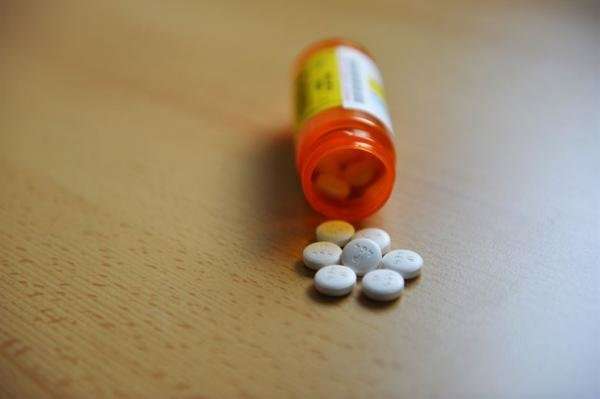Let's talk about Rx use—recognizing and reversing an overdose

According to the National Institute on Drug Abuse, the misuse of and addiction to opioids is a serious national crisis, with more than 115 Americans dying from opioid overdose every day. Knowing how to prevent and recognize an overdose, and how to respond to it, may save a life. Here's what you need to know.
While prescription medications are only safe when taken as directed by a medical professional for a specific health purpose, some may still choose to use outside of these conditions. It is illegal to take a prescription medication that was not prescribed to you directly.
Opioids and overdose risks
Opioids are drugs derived from opium, also called opiates. Opioids include semi-synthetic and synthetic opiates, which include illicit drugs such as heroin, fentanyl and carfentanyl. Opioids also include prescription pain medications, such as morphine, hydrocodone, oxycodone and OxyContin. Overdoses with these types of medications can be fatal and difficult to predict.
Mixing any type of prescription medication with alcohol or another drug drastically increases the likelihood of adverse effects. Depending on the medication used, mixing can lead to potential seizures, alcohol poisoning, heart problems, impaired breathing and the increased likelihood of an overdose.
Other risk factors include the quality of the medication (which may be unknown, even to the user), the user's personal tolerance and use patterns, the environment in which they are using and underlying health problems that can slow the respiratory system.
Recognizing an overdose
If you think there is an overdose risk, look for these signs:
- Pinpoint (small) pupils
- Shallow or no breathing
- Blue or grayish lips/fingernails
- No response to stimulus (e.g., being pinched)
- Gurgling/heavy wheezing or snoring sound
If any of these signs are present:
- Ask if the person is alright and look for a response.
- Make a fist, and use your knuckles to apply downward pressure to their sternum; this is a test to see if they respond to the pain stimulus.
If they do not respond:
- Call 911.
- Administer naloxone if available (described below).
- Start CPR.
Reversing an overdose
Naloxone, or Narcan, is a drug that can reverse the effects of an opioid overdose by helping a person start breathing again. It will not cause harm if used on someone who is not experiencing an overdose; meaning, even if you're unsure if an overdose is in progress, it is safe to administer naloxone. Naloxone is available at select pharmacies as a nasal spray and can be purchased by anyone, without a prescription.
Naloxone works for 30–90 minutes, so it's important to call 911 before administering naloxone, as the person can go back into an overdose even after the naloxone is administered. They will need medical attention when the naloxone wears off.


















